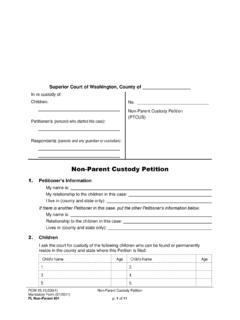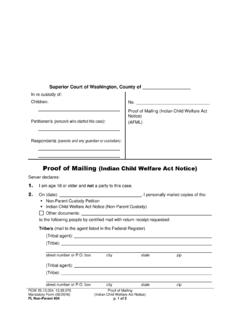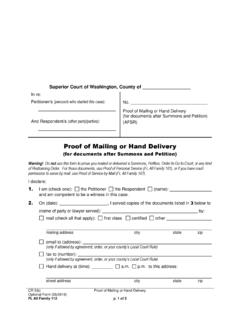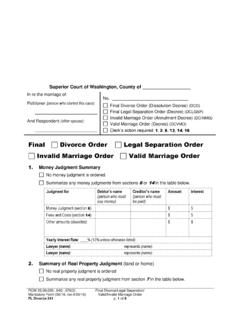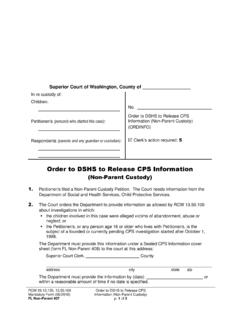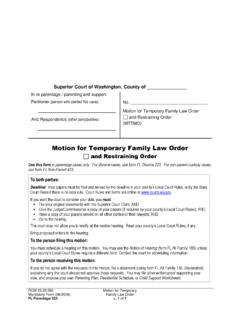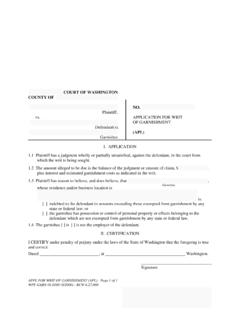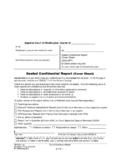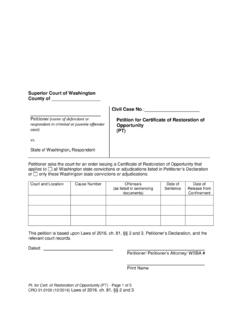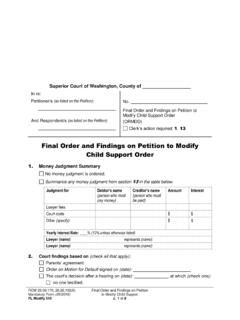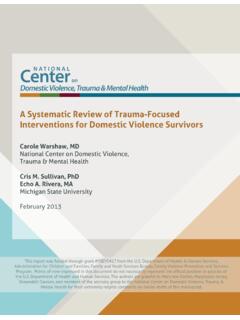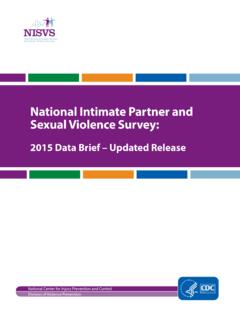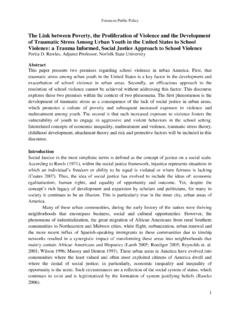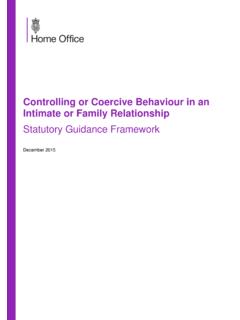Transcription of CBT Guide for Intimate Partner Violence - Wa
1 Lucy Berliner, MSW Laura Merchant, MSW Amie Roberts, LMHC, CPM David Martin, JD CBT Guide for Intimate Partner Violence 1 CBT for IPV Guide | 2020 Table of Contents Welcome to the Cognitive Behavioral Therapy (CBT) Guide for Intimate Partner Violence .. 3 Introduction .. 5 Group CBT for IPV: Session Guide .. 7 Session 1: Orientation to CBT for IPV .. 7 Session 2: Orientation to Treatment Principles .. 8 Session 3: Orientation to the Principles of Offender Treatment .. 9 Session 4: Defining IPV.
2 10 Session 5: Orientation to Feelings and Basic Coping Skills .. 11 Session 6: Dynamic Risk Factors .. 12 Session 7: Personal FIT Circle .. 13 Session 8: Cognitive Behavioral Therapy .. 14 Session 9: CBT Behavior and Its Functions .. 15 Session 10: DBT .. 17 Session 11: ABC and Chain Analysis .. 19 Session 12: DBT Skills for Difficult Emotions .. 20 Session 13: Skills for Managing Anger .. 21 Session 14: Healthy Habits for Lowering Stress .. 22 Session 15: Helpful Thinking .. 24 Session 16: IPV Unhelpful and Helpful Thinking .. 26 Session 17: IPV Impact on Victims.
3 27 Session 18: Victim Empathy .. 28 Session 19: Clarification Letter- Victim and 29 Session 20: Healthy Relationships-General .. 30 Session 21: Healthy Romantic Relationship Skills .. 31 Session 22: Healthy Sexual Relationships .. 32 Session 23: DV, Children and Positive Parenting .. 33 Session 24: Assertive and Communication Skills .. 35 Session 25: Practicing Assertive and Communication Skills .. 37 Session 26: Problem Solving .. 38 Session 27: Creating a Prosocial Support System .. 39 2 CBT for IPV Guide | 2020 Session 28: Documenting Cognitive and Behavioral Changes.
4 40 Session 29: Relapse Prevention .. 41 References .. 42 3 CBT for IPV Guide | 2020 Welcome to the Cognitive Behavioral Therapy (CBT) Guide for Intimate Partner Violence The Guide provides an additional resource for the WA State response to Intimate Partner Violence (IPV). It is a session by session curriculum to support the work of Domestic Violence Intervention Providers (DVIP). It is designed to be consistent with the Revised WAC It covers all the required content areas. It is also consistent with the Revised WAC reference to Cognitive Behavioral Therapy (CBT) and the focus on cognitive and behavioral changes.
5 There is currently no well-established effective program specifically for individuals who engage in IPV. Work is ongoing to develop and test such interventions. In the absence of a specific proven program, this Guide provides a generic CBT-based treatment manual with clinical supports. It has not been tested in a research study. No claims are made that it is effective in reducing IPV. However, it is based on a well-established theory and the clinical skill oriented content is supported by research. As well it is based in part on a generic CBT and DBT based treatment manual for sex offender treatment in WA.
6 Like DVIPs, Sex Offender Treatment Providers (SOTPs) also operate within WACs. CBT is based on a theory that thoughts, feelings and behaviors mutually influence each other. CBT based treatments target: unhelpful thoughts; difficulty managing intense negative feelings; ineffective or problem behaviors. CBT based treatments are effective for many clinical conditions and behavioral problems. CBT is the underlying theory for many effective therapies for common clinical conditions such as anxiety, depression, PTSD, and disruptive behaviors. Effective treatments for individuals who break the law or abuse their children are also typically CBT based.
7 There are a number of branded CBTs that target law breaking behavior. We want to be fully transparent that we come at this Guide from the perspective of evidence-based practice. EBP means preferring treatments that have been shown to be effective in research studies. We are aware that evidence-based is a relatively newer idea in the delivery of psychosocial treatments. While evidence-based medicine is embraced as the standard for health conditions, that has not always been the tradition for behavioral health conditions and practice. There continue to be controversies and disagreements.
8 As well we are very far from arriving at proven treatments that work for every behavioral health problem. As stated, the reason we have chosen the CBT framework for the Guide is that CBT is the underlying theory for many evidence-based interventions, including those for individuals who engage in antisocial or aggressive behavior. We are experts in CBT for emotional and behavioral problems and have been teaching CBT based clinical skills across the State of Washington for many years. CBT is an active, change oriented approach to therapy. How is CBT delivered?
9 CBT is delivered in a collaborative and transparent way with clients, it is structured and focused, it has a specific target, it involves teaching skills and coaching clients to do them in real life, and it often uses measurement to see if the treatment is working. What are the common elements of CBT? CBTs typically contain (1) psychoeducation (clinically relevant information); (2) coping or emotion regulation skills training; and (3) correcting untrue or unhelpful thoughts. The behavioral component (4) depends on the clinical target. For individuals who break the 4 CBT for IPV Guide | 2020 law or abuse children, the behavioral components often include relationship, communication, problem solving, and assertiveness skills.
10 We also know that real world settings are often complicated and messy; the application of standardized protocols or Guides has to be flexible. We adopt a flexibility within fidelity approach that allows for adjustments and adaptations as long they do not stray from the core underlying principles and practices for bringing about behavior change within a CBT framework. The format of the Guide is designed to not be prescriptive about exactly how to cover the Key Learning points. We recognize that facilitators have their own styles of covering material.
